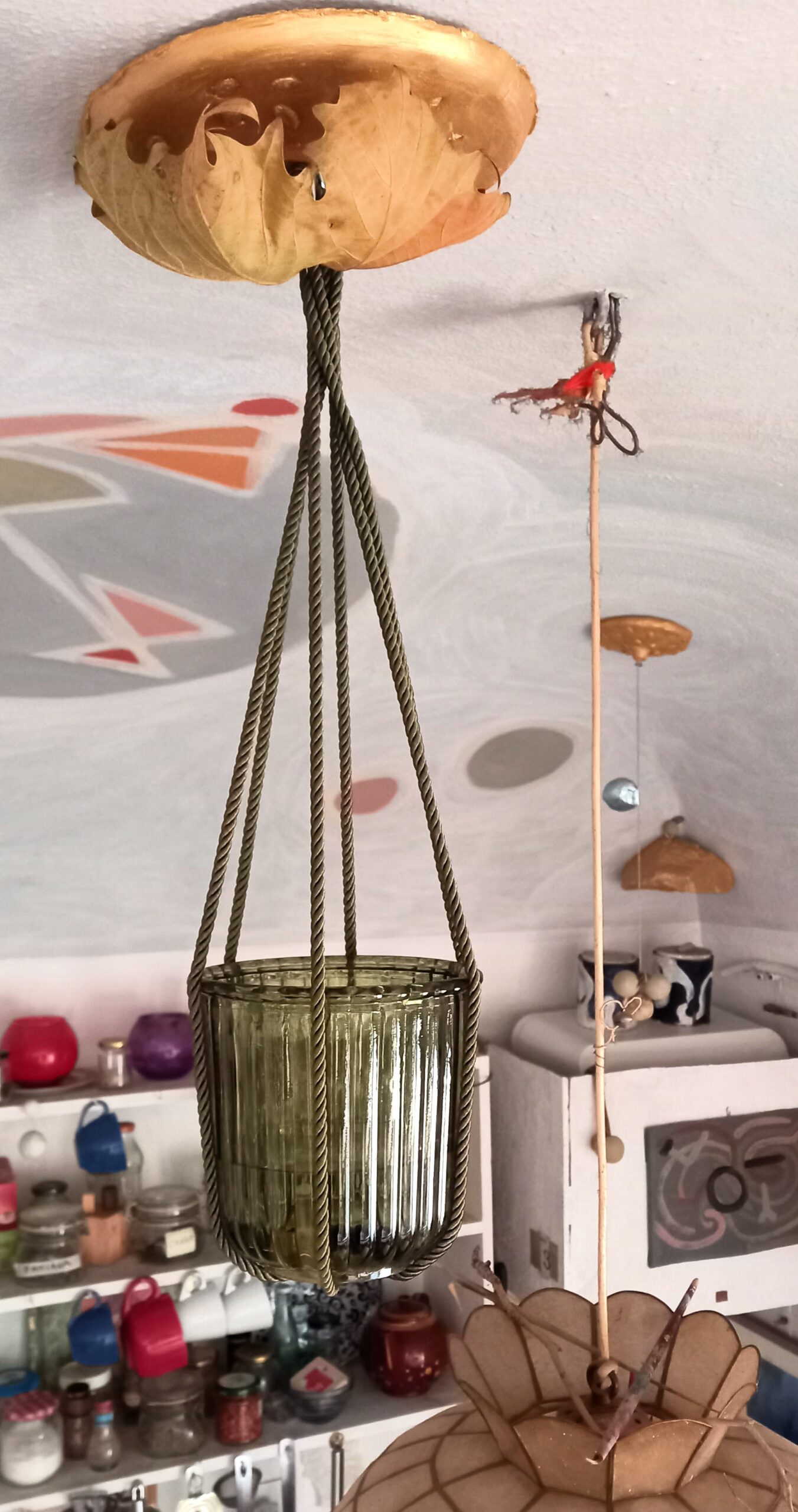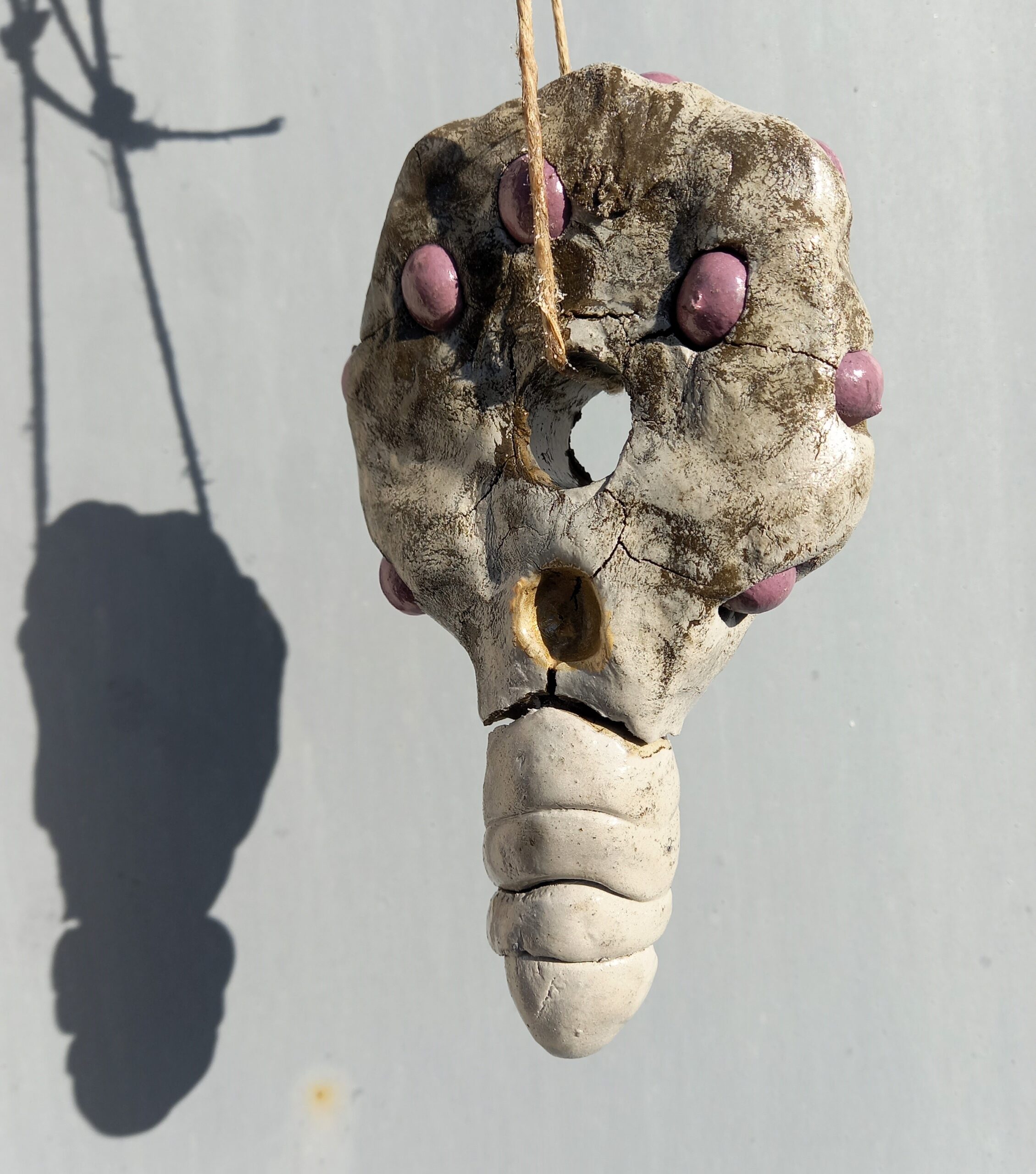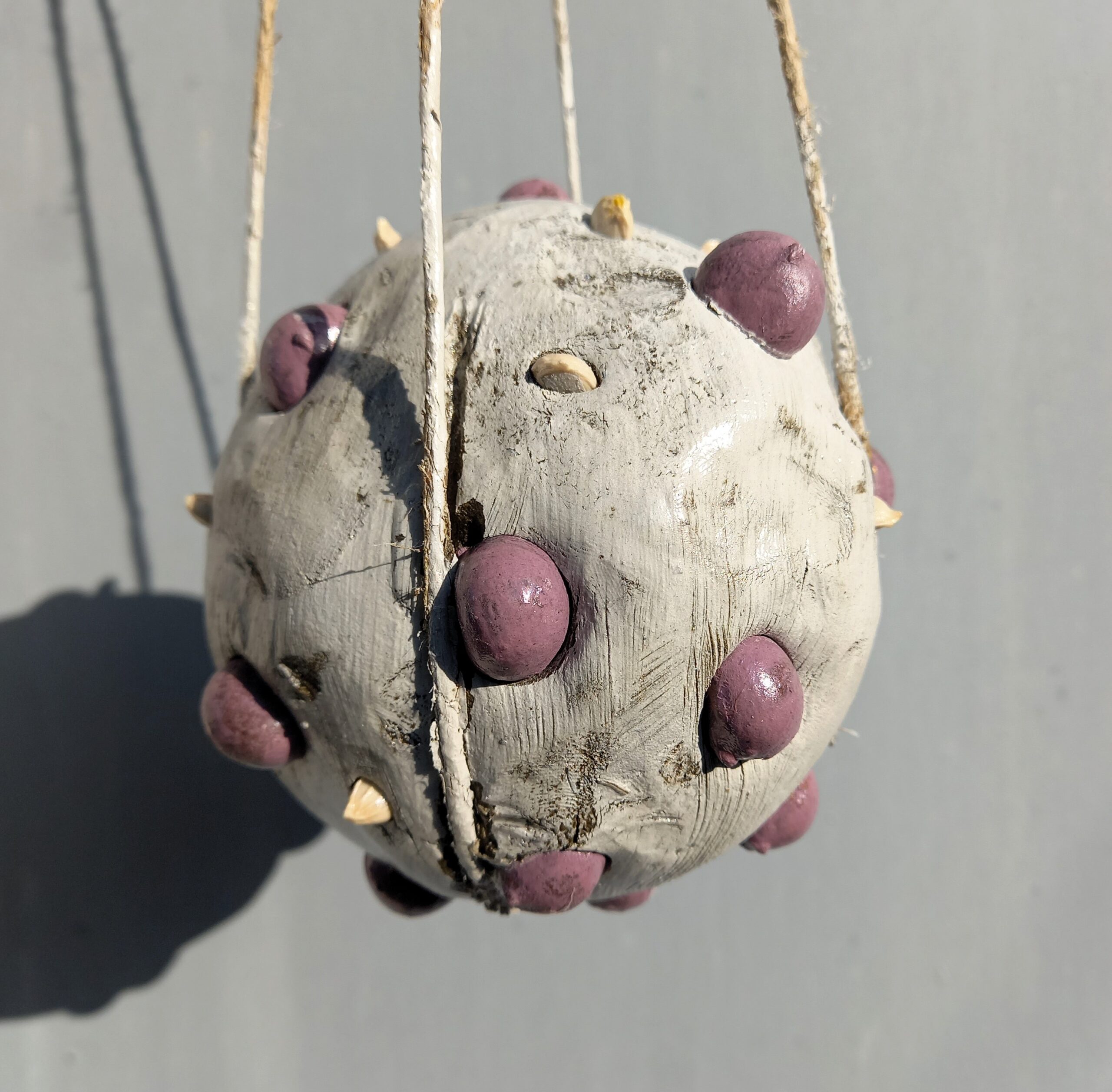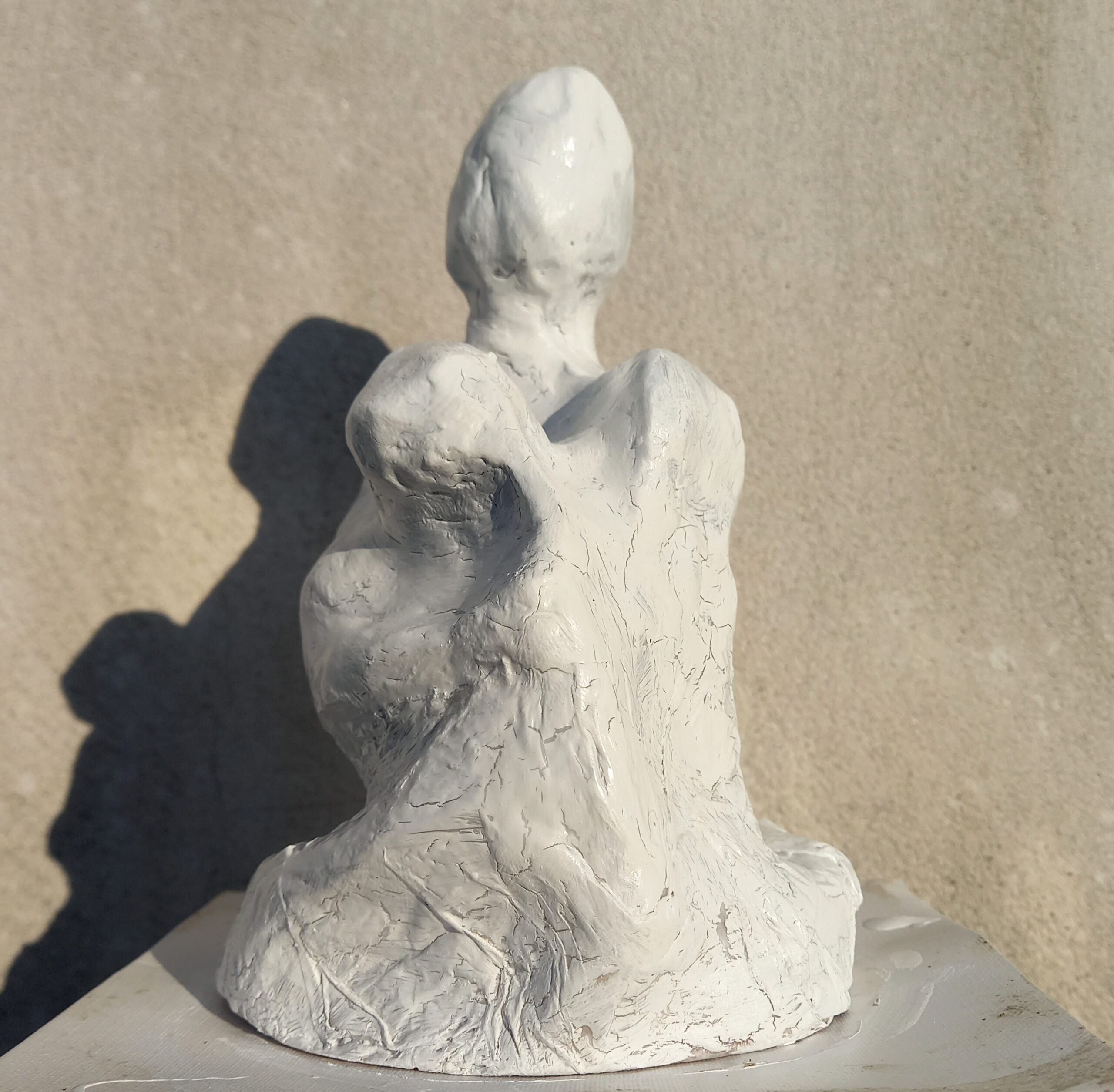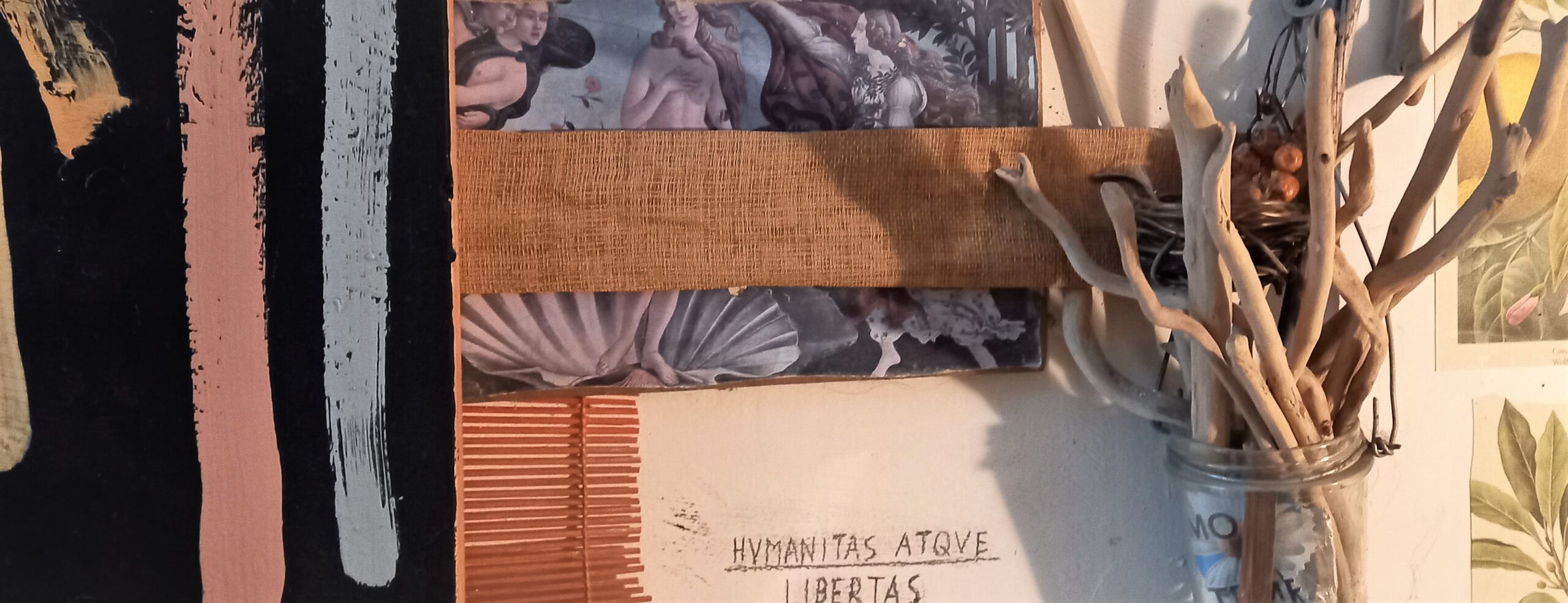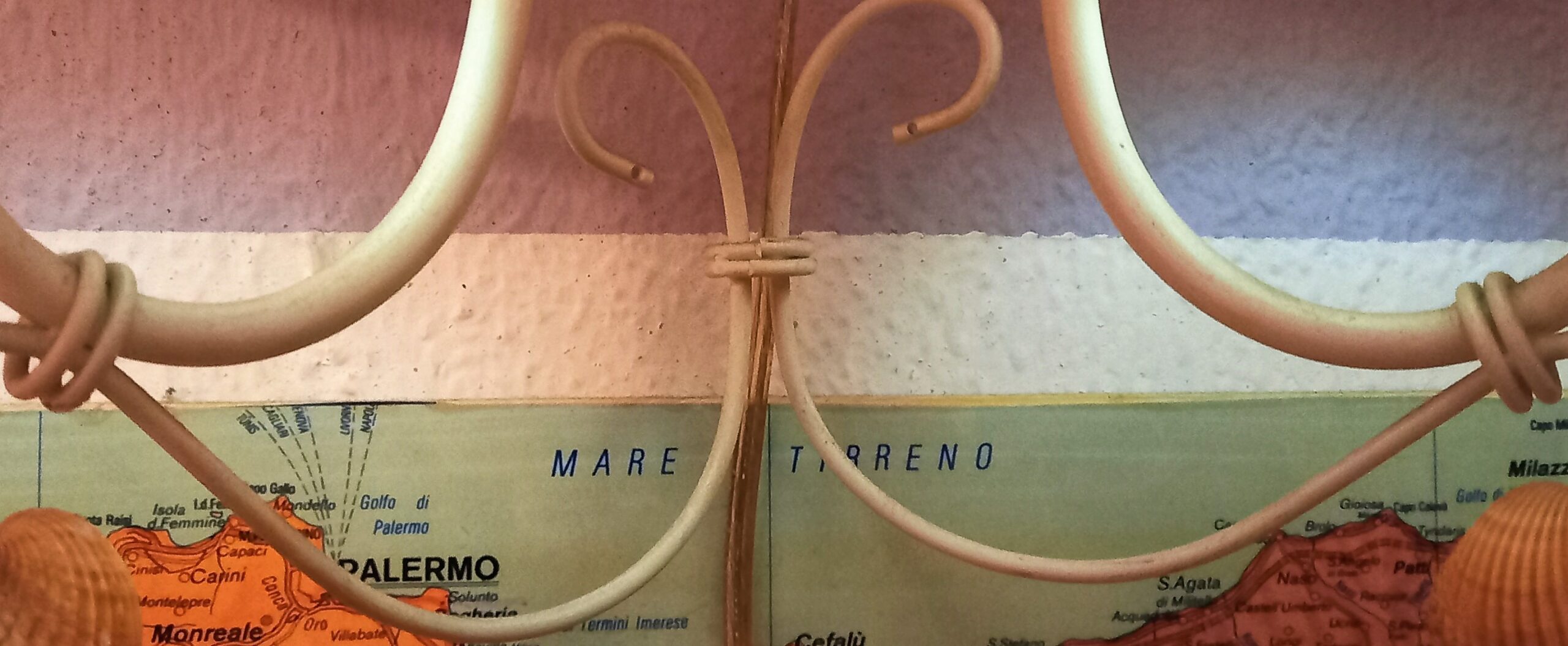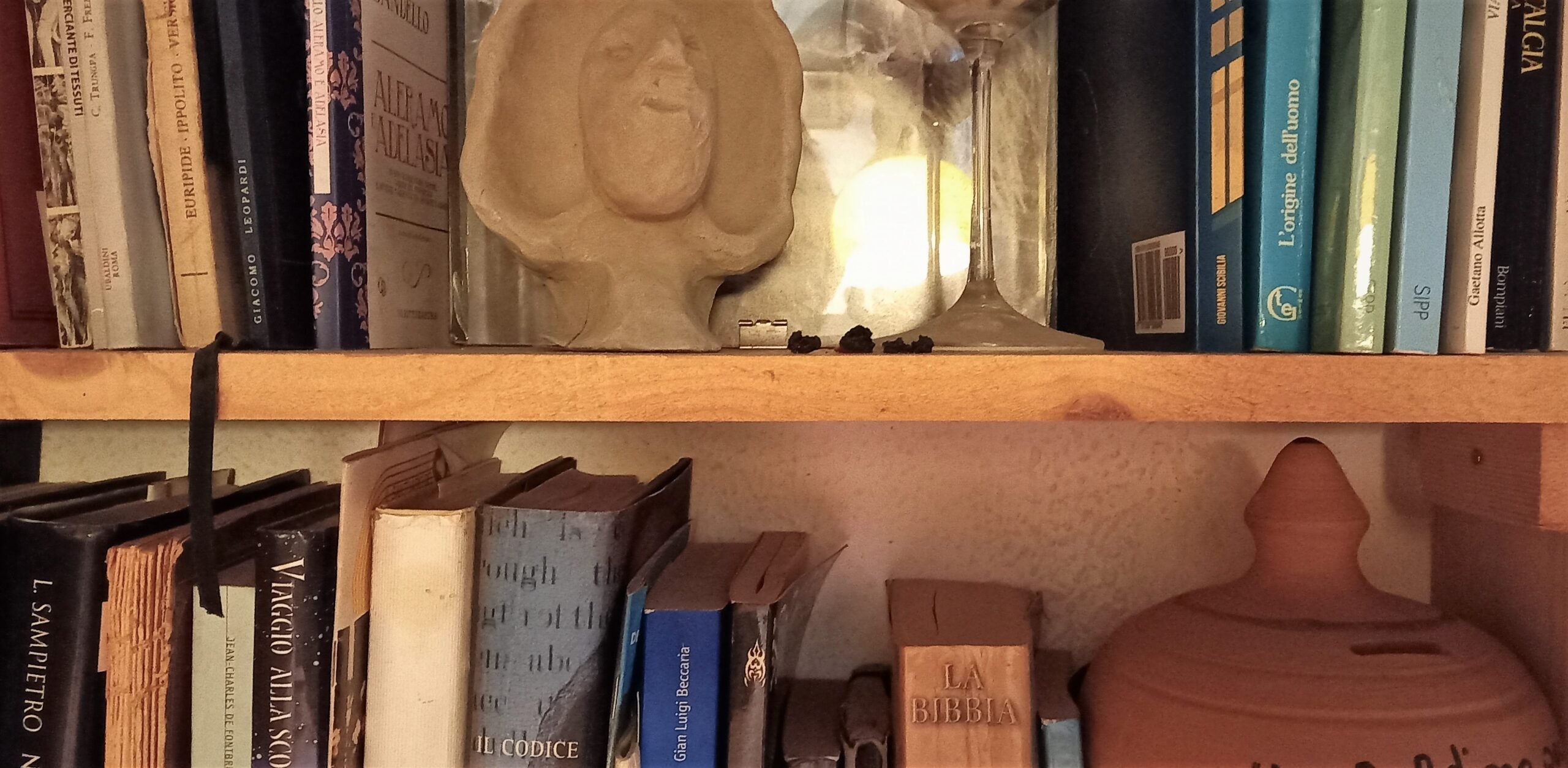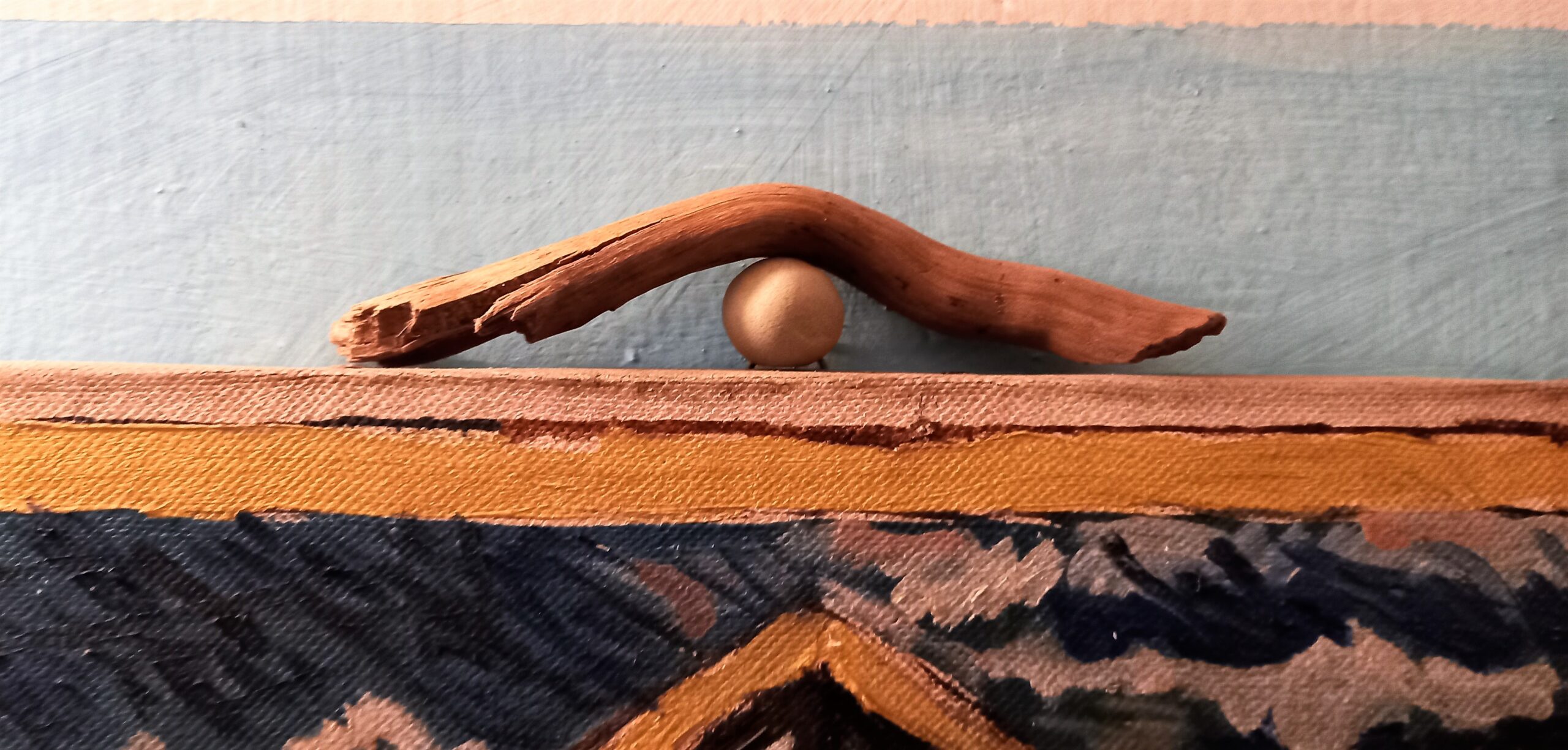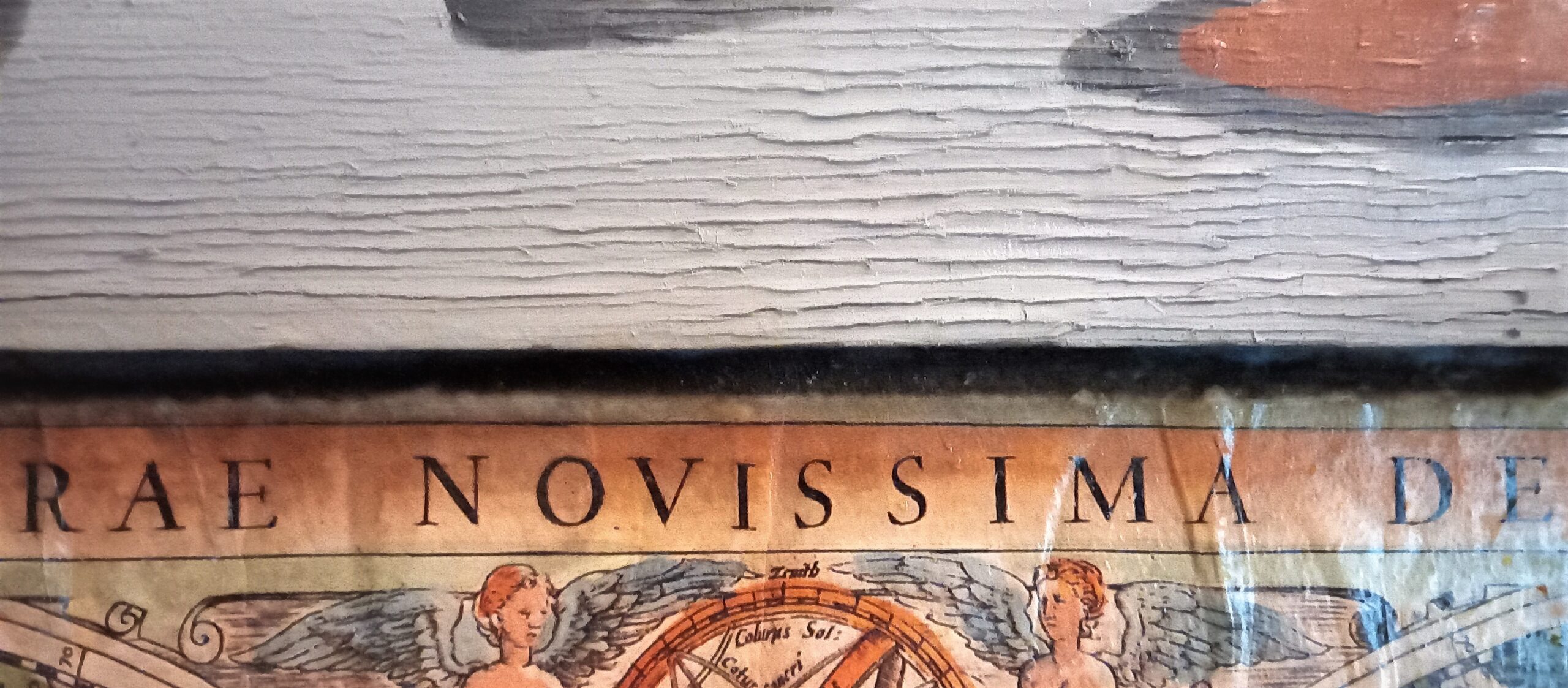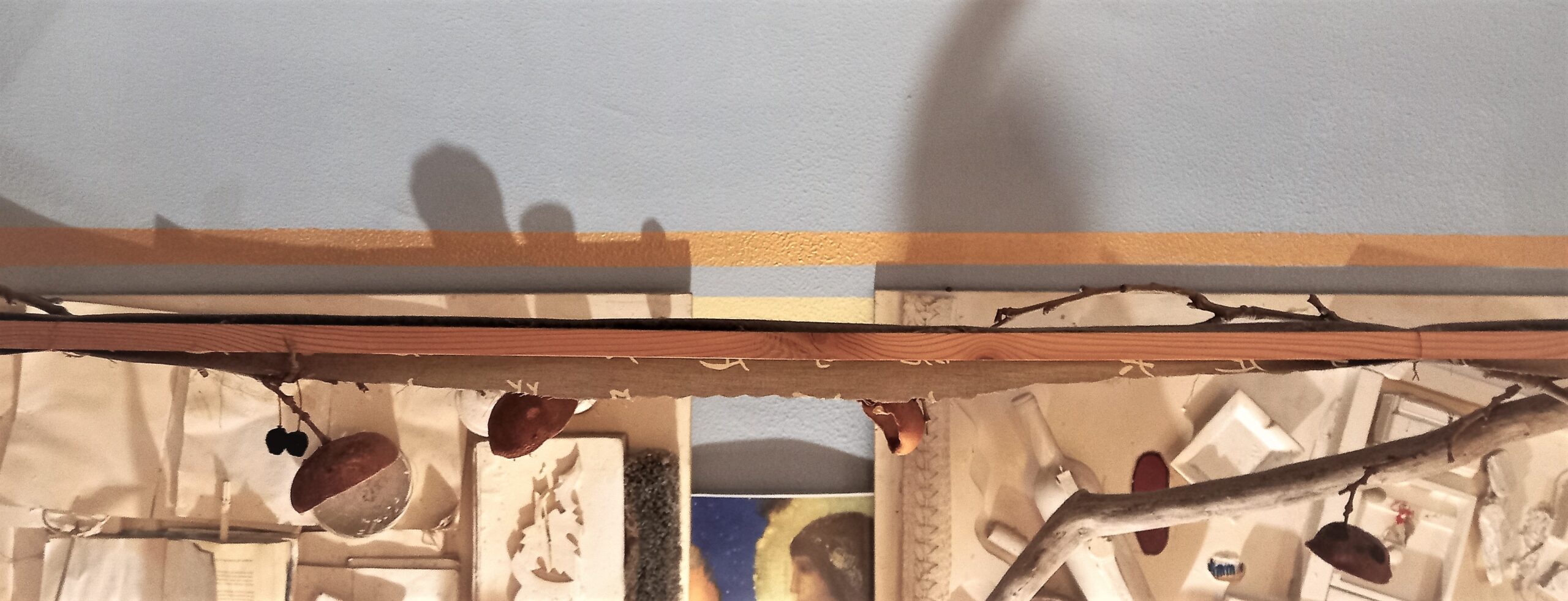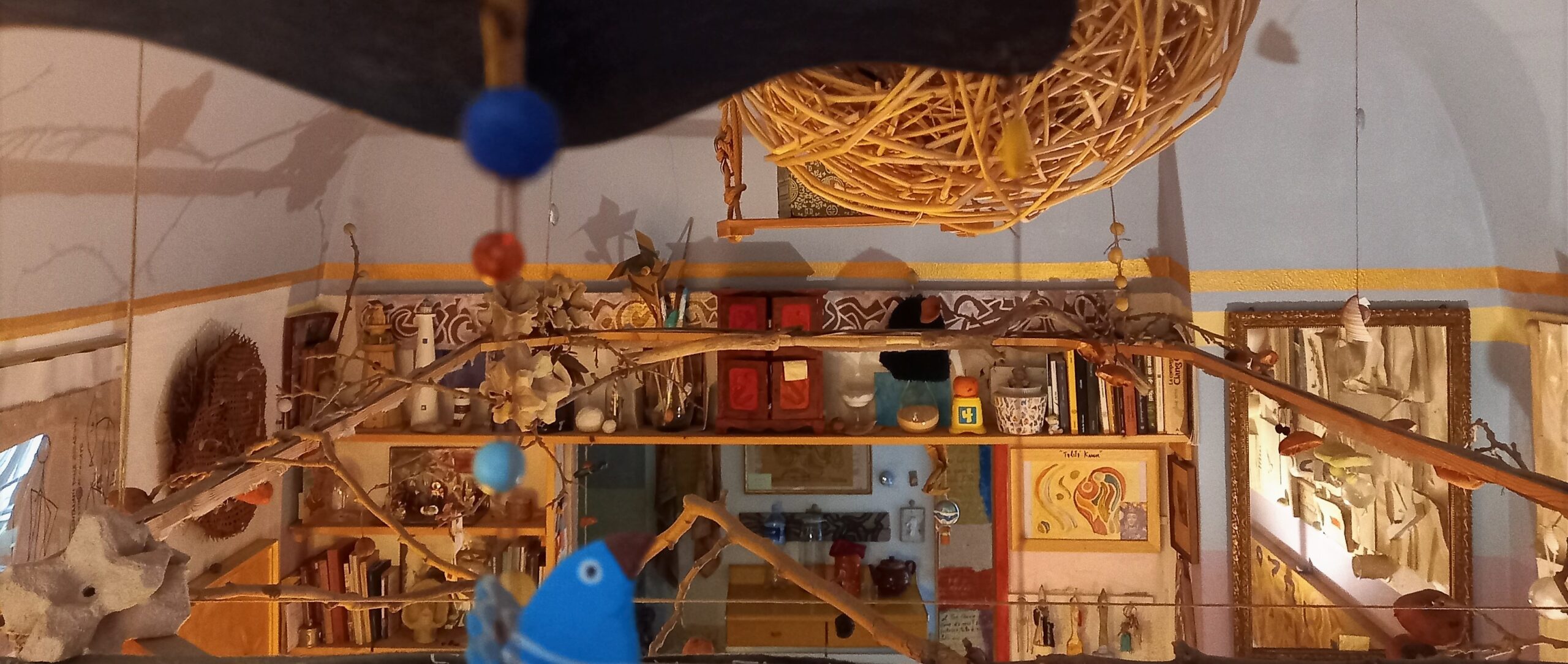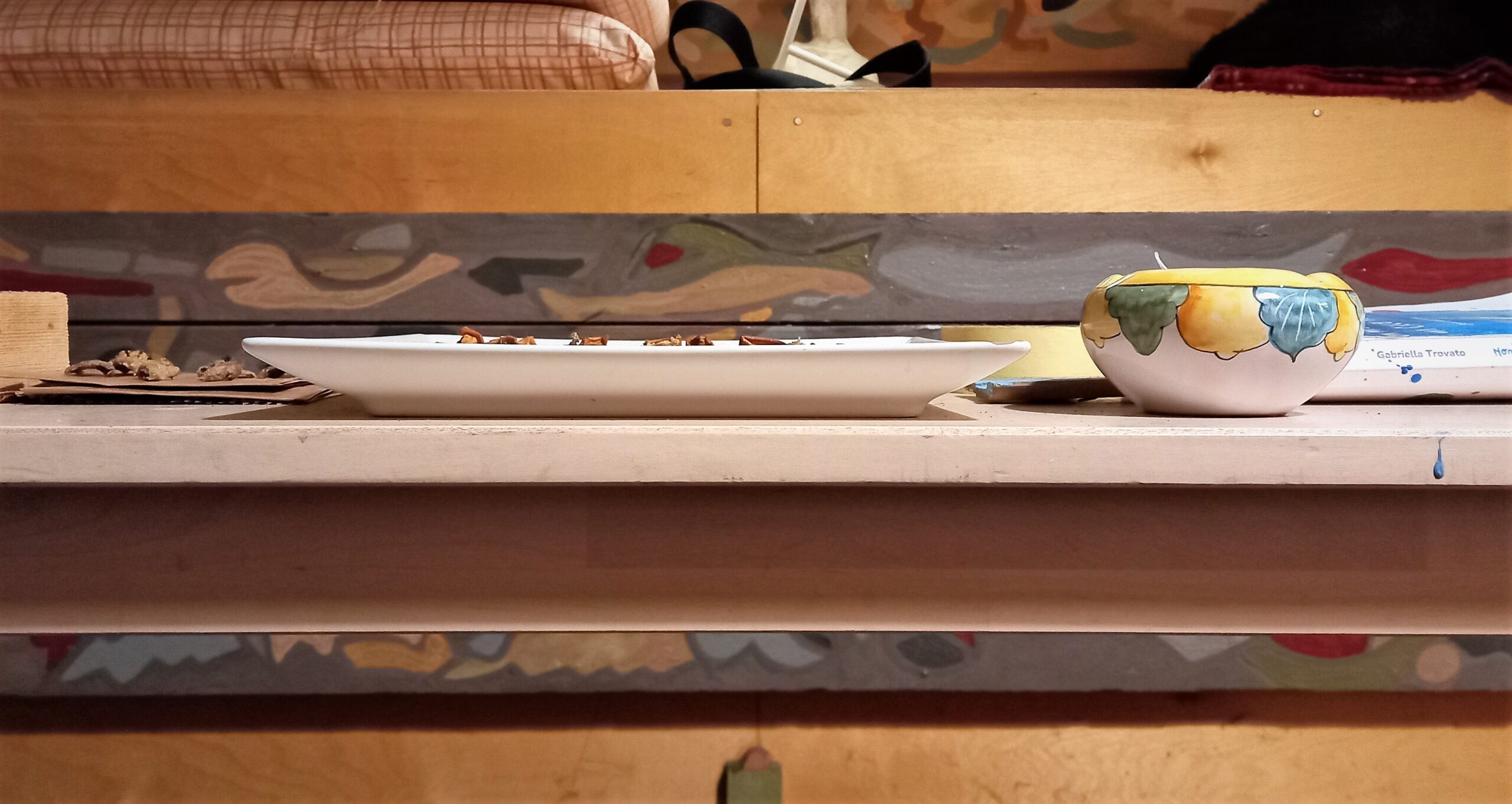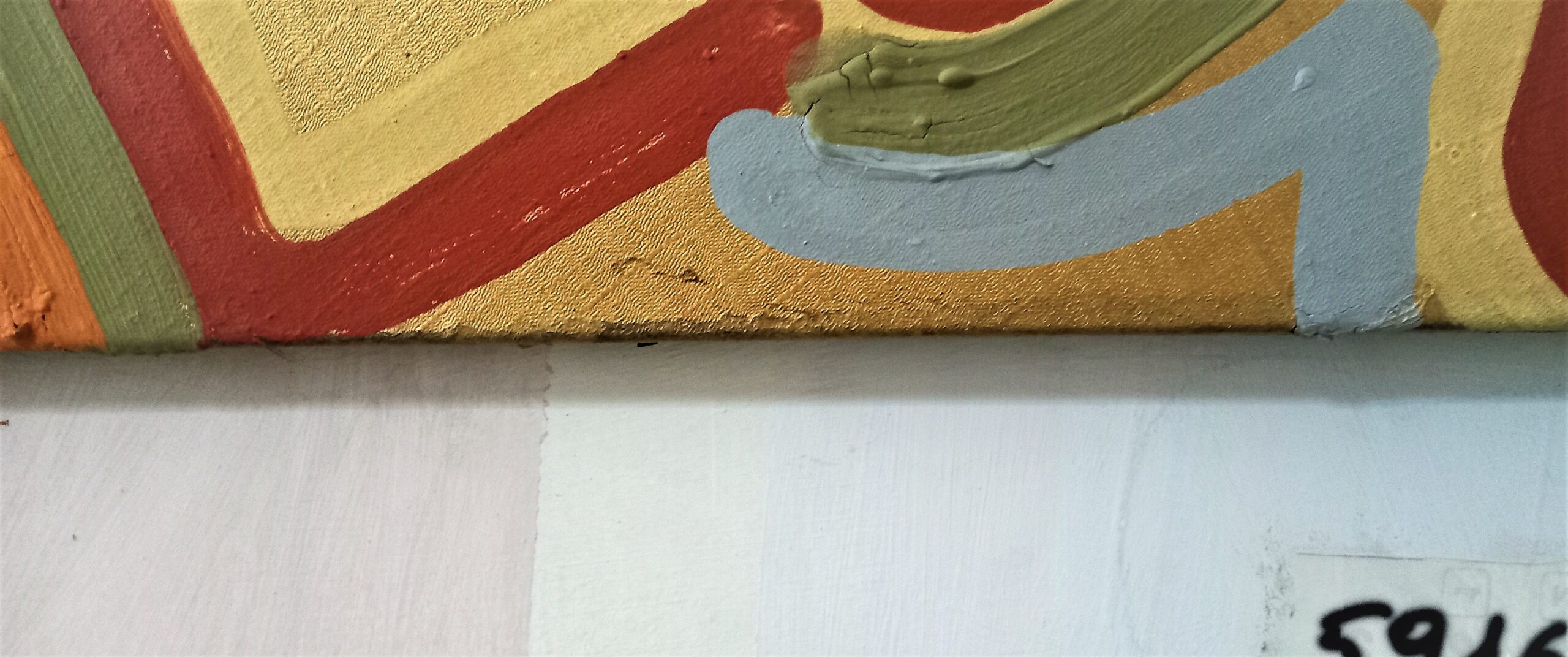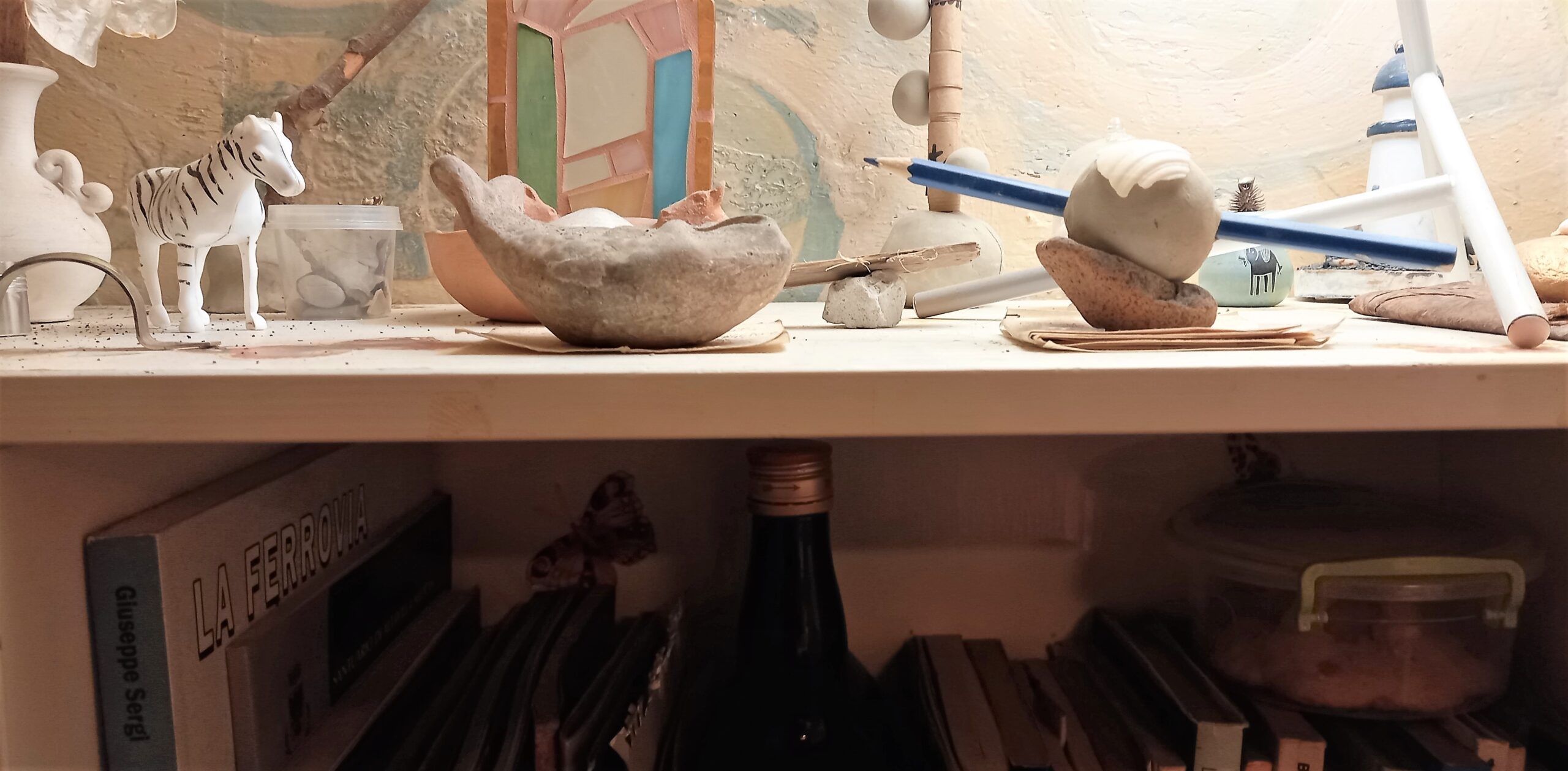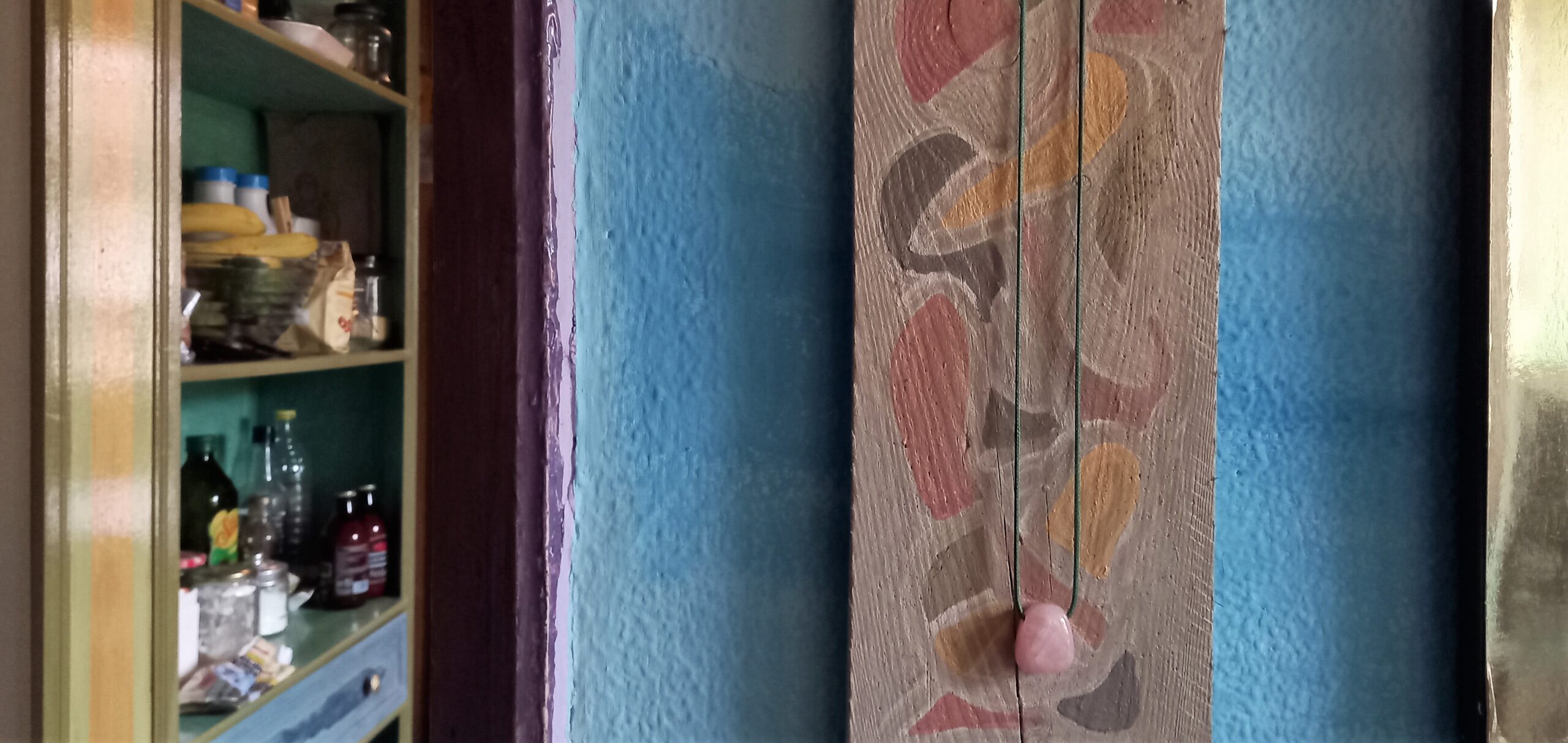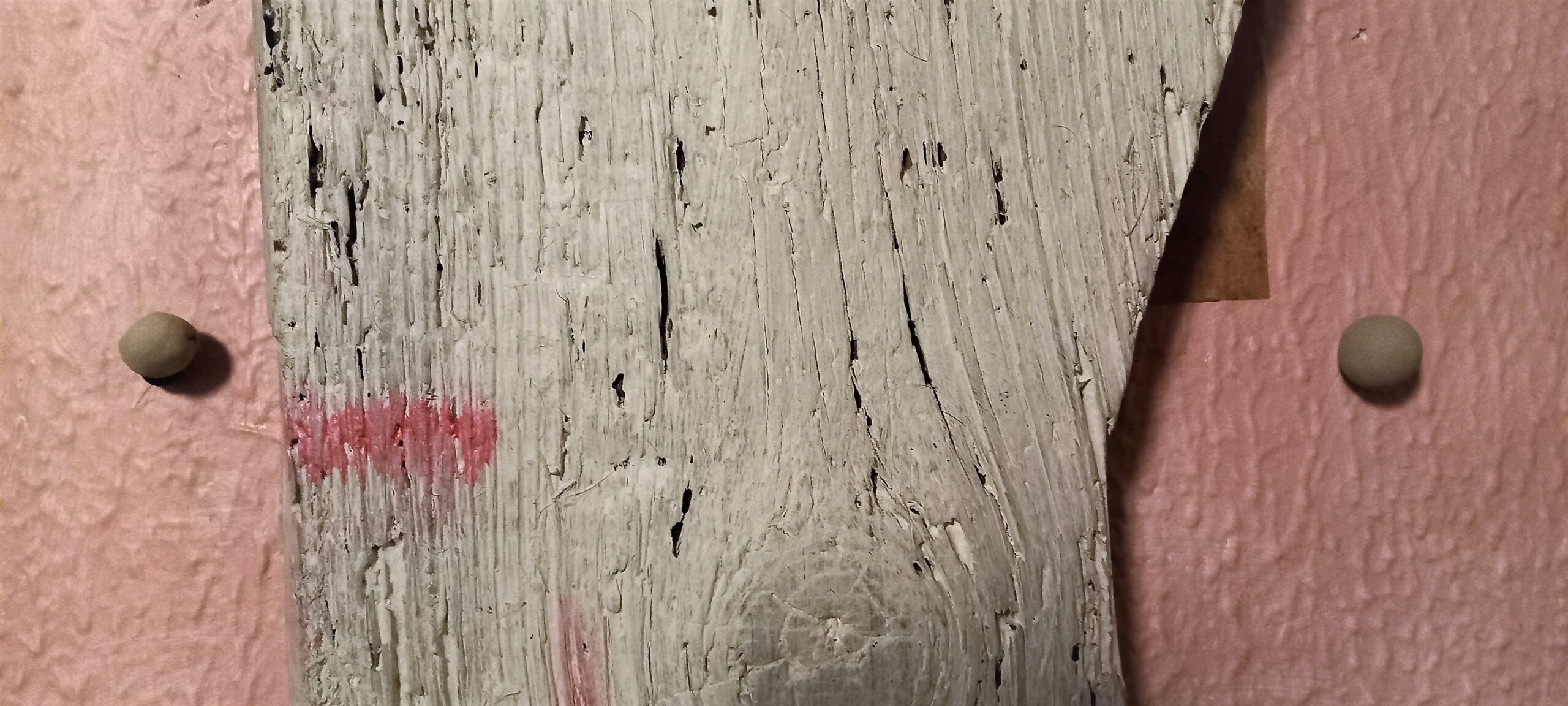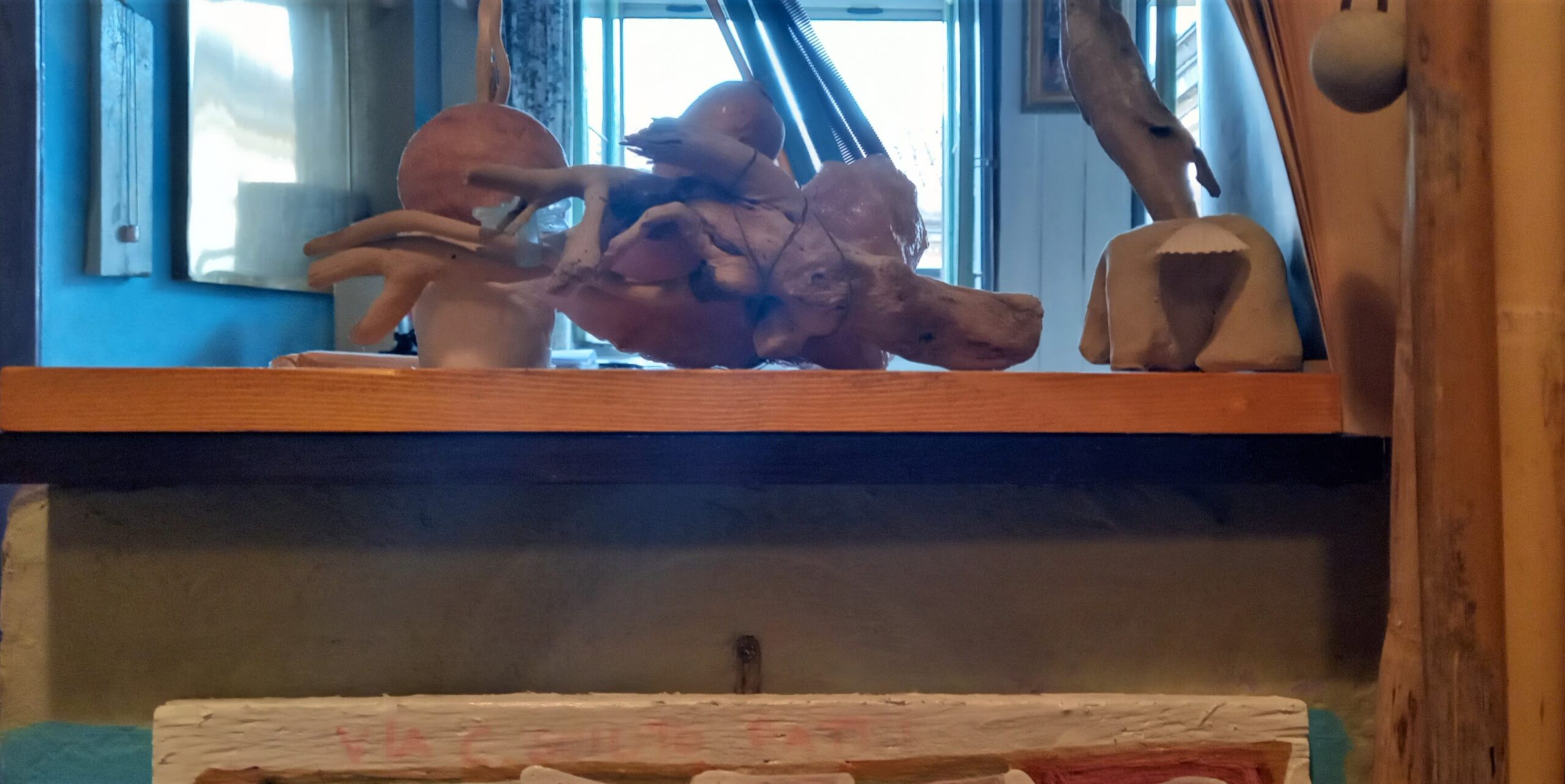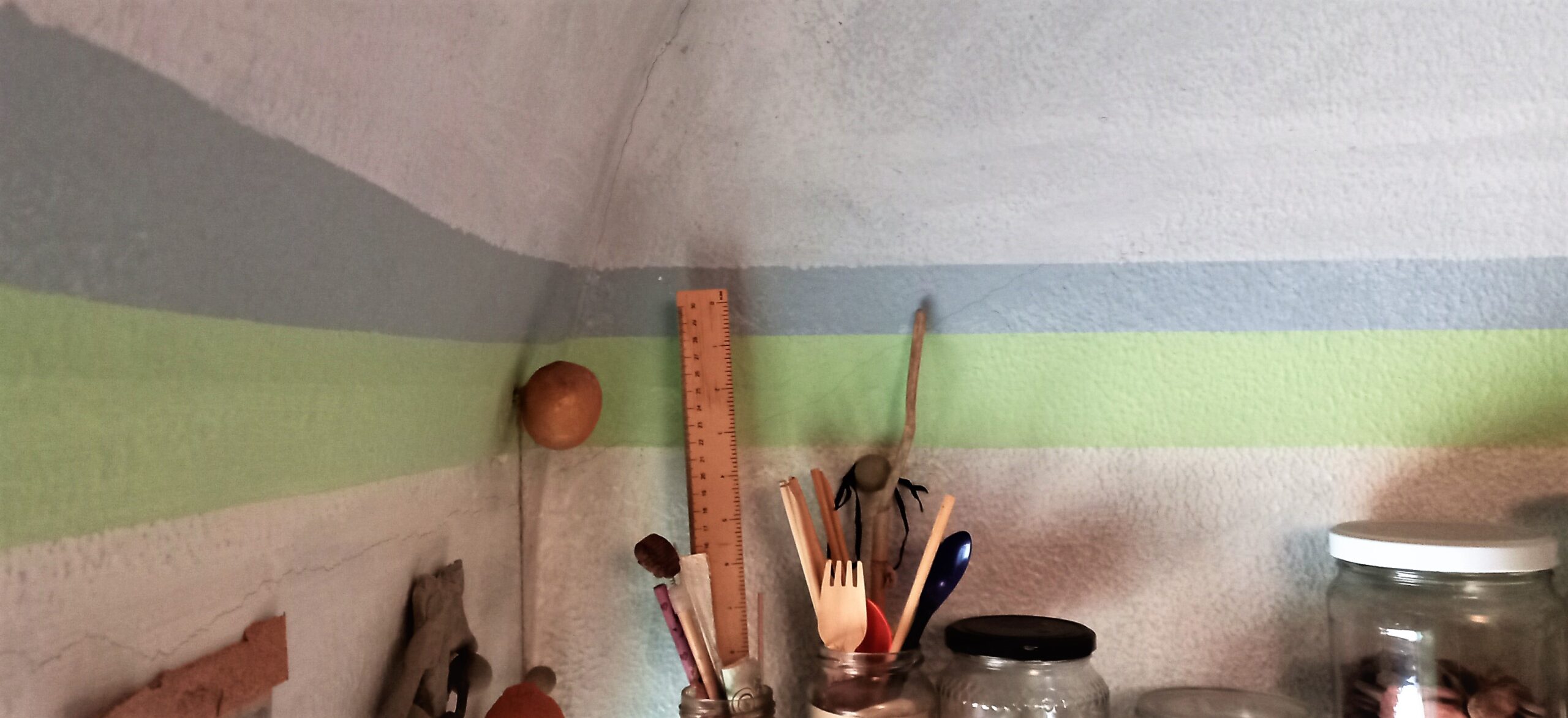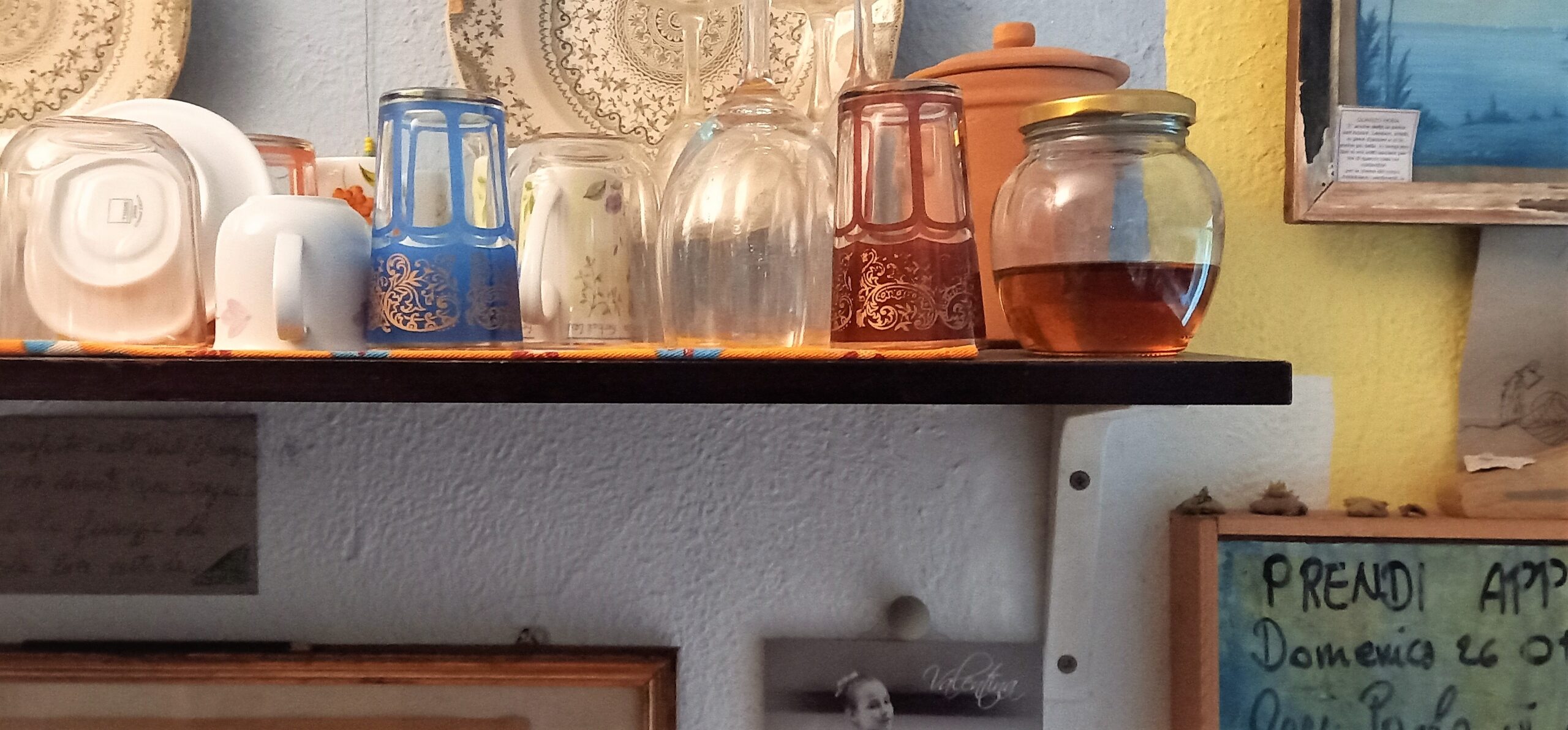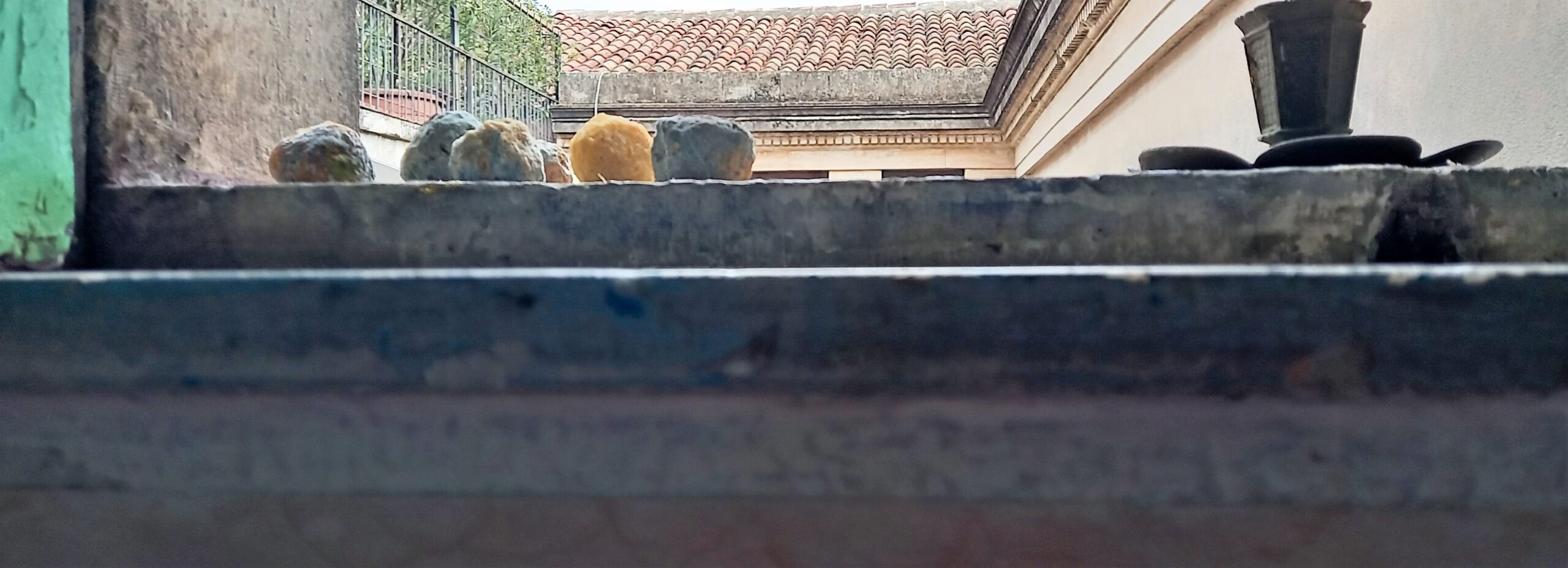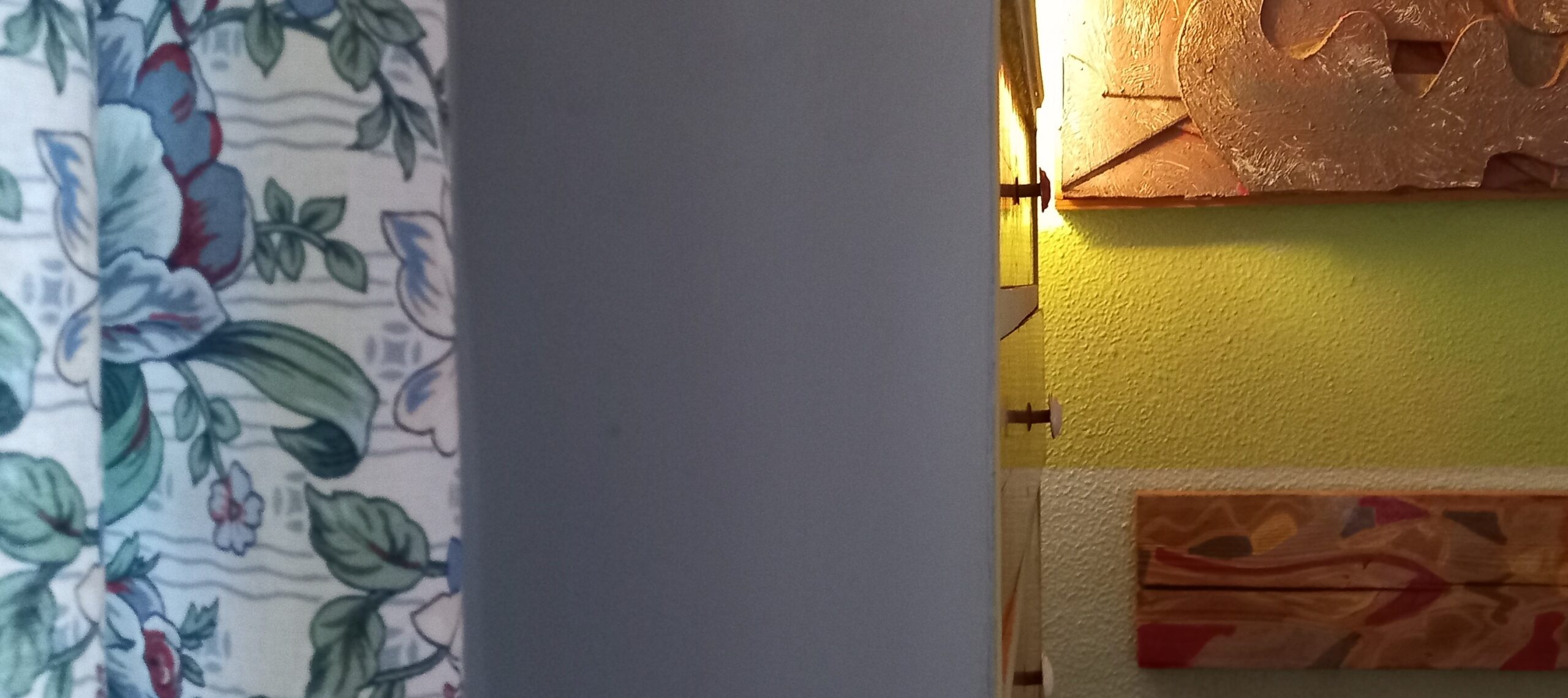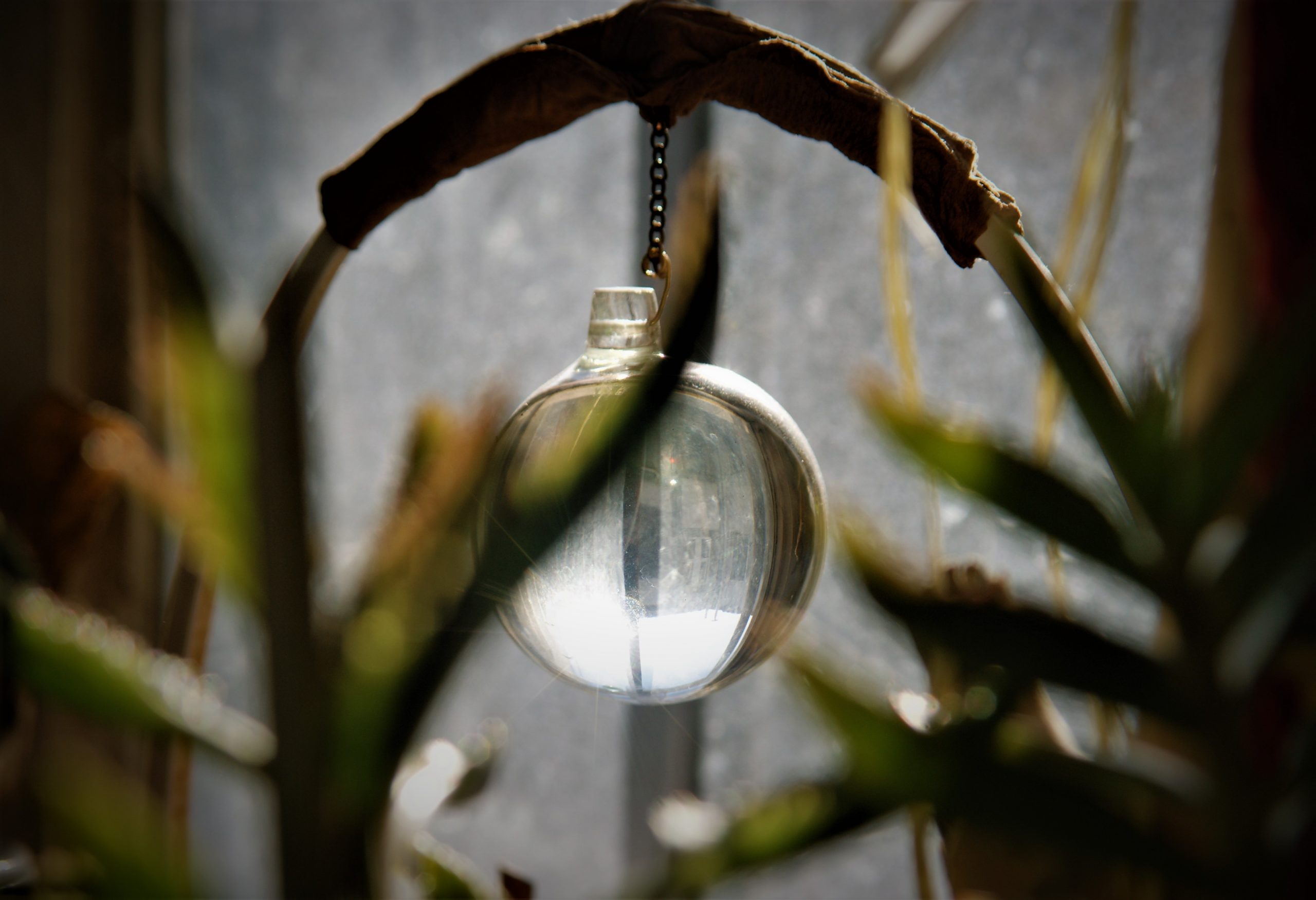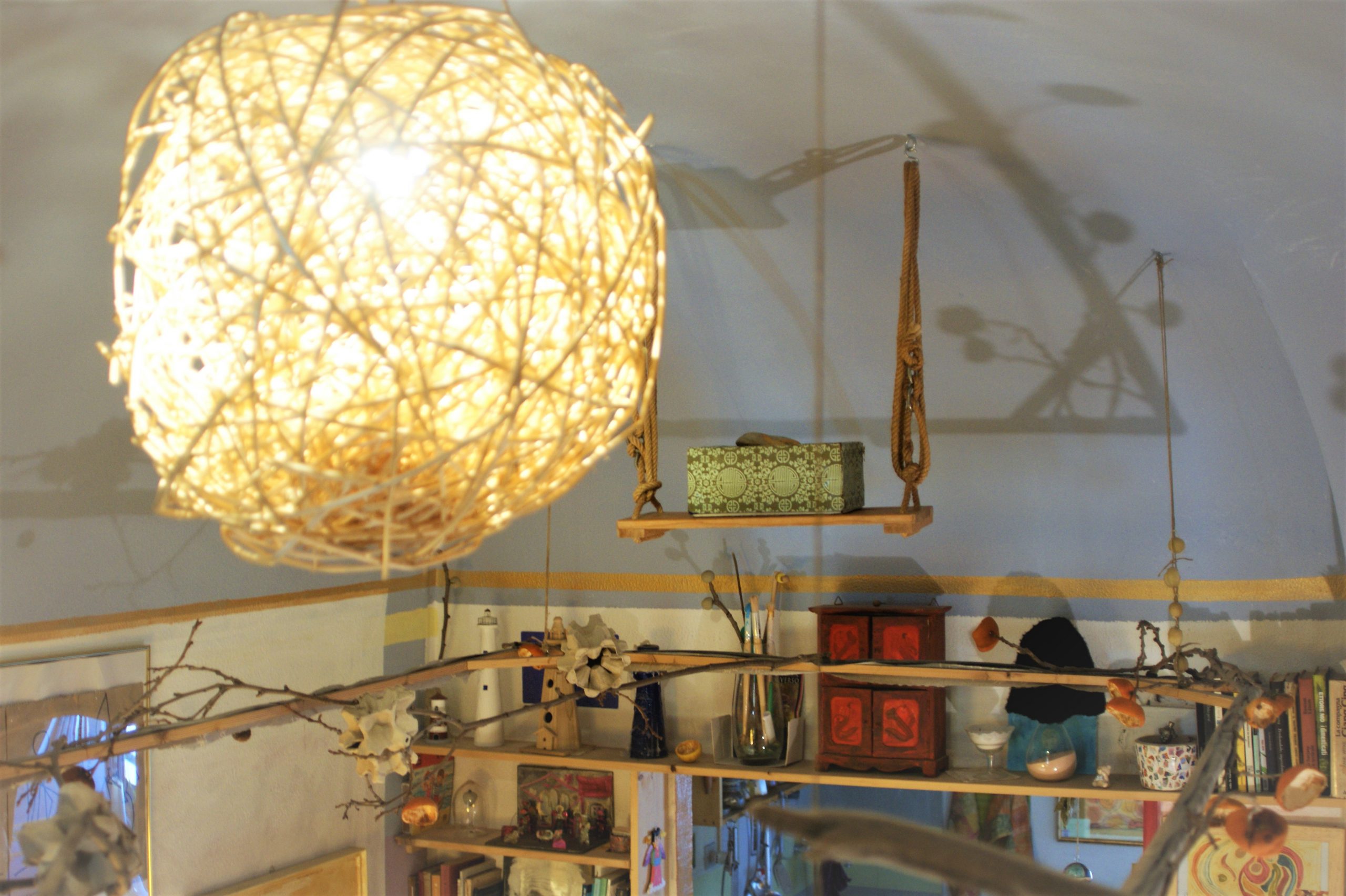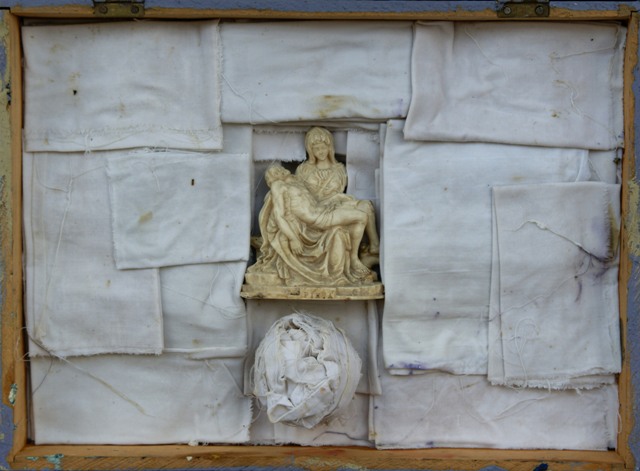
Frammenti di memoria – Memory Fragments (2014)
Italian
Accademia di Belle Arti – Catania 2007
CLAUDIO AREZZO DI TRIFILETTI, IN THE PANORMANA OF MODERN ART BRUT BETWEEN PSYCHOLOGY AND TRUTH
By Daniela La Magna, editor Elio Calabresi
Claudio Arezzo di Trifiletti is a genius. Recent studies carried out by Cambridge University argue that with genes “you are born and become”. In that sense, the innate abilities in humans, which they have in any given field, if not taken care of or carried out with great study or with a constant work, you will relentlessly lose them. This case regards Claudio’s effort in a field that already as a child sent him infinite impulses and signals: Art.
If Mozart from age three when he began to play the violin had not gone on to start his career as a composer, his music probably would not exist today. This, for many, could be a predictable idea, but in the course of our lives we have all embarked on paths as children and then, for one reason or another, we lost control. As it happens, Claudio Arezzo grew up in a family of noble origin, of artists and architects, where his eyes were always in close contact with lines, drawings, paintings, short, with many different kinds of art-making; as a child, everything led him to have a careful and deep projection into this kind of thing and to life in relation to people. Two roads that may appear separate and distinct but are, in fact, inseparable and interconnected. This is to explain one of the philosophies of the same artist for whom life sometimes put us ahead of the signals to follow and just listening to our conscience or our “soul”, we have the opportunity to take them on and not abandon them after long periods of reflection. As a child, he learned that the paintings in ancient times were made with egg yolk and experimented his teachings painting houses, boats and everything that his eyes could find “beautiful” and deep, as his first canvas made at the age of seven, which represents a single boat in the middle of the sea with a man rowing on board. He thinks of beauty as the norm, with a view of the norms, however, from the eyes of a pure soul. Those who recall the speech of the child who creates with such freedom that assimilates all that is turned into a thought drawn. This is noted by the young artist’s own words: “Sometimes the emptiness is more positive than something full, as it can be filled again”. The frenzy, speed, making art part of this, first the child and the adult Claudio then, have the same ability to open up completely to the thousands of images, and the endless thoughts galloping continuously in their mind, sometimes even closing eyes, these are delineated almost by themselves in a kind of free association reasoned as actually lived with the body and the spirit. Emotions are crucial for this artist. Lover of travel, of life and of the relationship that he can establish with people. The confusion that his works apparently transmit is the same chaos of the world in which we are destined to live and with whom we deal with every day of our lives. Art made of modernity, in which the artist grows with experience as the age of a man stretches out with time. His experiences called the “messages”, they sometimes come from other outside “consciousness”. The problems of a boy who lives in a family with divorced parents did not shake him until the age of adolescence, where he noted in a more accentuated the lack of a family union. Over time, this has been compensated with friends and by always staying in the midst of many people thanks to Catania, which offers so much as a city with a great number of young people. “P.R.” for a time and the owner of the alternative nightclub of Catania, starting at the age of about 16 his work becomes living in contact with people. People like him, his peers, were able to let him develop a great sense of observation to his life and the context in which it is operating over the years. An important spiritual path consisted of a trip to India. Here Claudio Arezzo, also influenced by the philosophies of the place, opened his mind and realizes that his place is stuck not in the middle of rules and compromises, but in the middle of the freest form of expression; one that is artistic. Photography, sculpture, installation and painting start to get the perfect furniture for his “Museum House Under Mount Etna.” Furniture that covers everything, as the magma of our volcano, but certainly not for the style in which these works are carried out. In the painting technique of Claudio Arezzo di Trifiletti, which he calls “footprint”, an important role has the breath, a breath that puts him in contact with the life that resides in all things. The doctrine that everything has a soul, he argues that “everything is imbued with life,” leads him to draw on his work whatever image may appear before the moment of creation, these, says the artist, come from things same: a wall, a stained cloth, a piece of antique furniture. The case has nothing to do with this kind of art-making, rather we can hazard a guess at the conclusion that his works are made using the technique of “psychic automatism” used in the past by the surrealists . As argued Breton: “Pure psychic automatism, by which one proposes to express, either verbally, or in writing, or by any other manner, the real functioning of thought. Dictation of thought in the absence of all control exercised by reason, outside of all aesthetic and moral preoccupation[…]the omnipotence of dream, in the disinterested play of thought. “This lack of control exercised by reason, however, should not make us think that when the artists work in this way they do absolutely blind. In reality, the surrealists were referring only to the fact that “the conscious mind constantly gives feedback on what is possible and what is not, “thereby affecting the free expression of creativity. For this reason, the dream is seen as an escape route from this world, and a fundamental means that we can trick the control of the will on the shares. The unconscious then states surrealism is expressed in dreams through free forms of association, that is, leaving an idea to follow another without the usual logical sequence of reasoning, but automatically, based on a freedom that flees from any control a moral, ethical or cultural. Substantial difference, however, between the works of Claudius and those of the surrealists is that, his limbs draw figures, prints previously created with the smudge the canvas with any type of mixture, such as dirt, biological fluids, water and others, are created almost spontaneously. The significance that he gives each work is in itself, since those figures amorphous, those gnomes, those masks, those mutilated bodies, those expressions sad, angry or smiling, they are always filtered through his mind, and the result of his own experiences life. The memory of a moment or simply the strong emotions of a given situation, may be the cause for the creation of an extraordinary work of art, as in the case of one of his earliest works entitled “Destiny”, in which the artist recounts all the events and the way that, without being fully conscious at the time, would soon be undertaken. This was painted with a single color (acrylic magenta) are depicted many passages of his later life, such as being vegetarian and today a labyrinth that, according to the artist himself, it represents the path of life that every man is starting Trinity will wrap up with a long “hermitage” to rediscover one’s own self, to go back to basics and to the side of God. Some of his works are linked together, so that one is his state of mind and his breath, with the color smooth, flat, often monochrome but with some shade of “dirt”, scattered over the surface, then, without the presence of his fingerprints, and another, on the other hand, is portrayed all thinking, what we are capable of feeling more powerfully, which is located in the first layer of our mind, made up of shapes and images that often cannot be identified if not carefully observed. Claudio Arezzo compares painting to lava, in which a person, staring at with their attention, “can find beings from the most varied forms.”The color is scattered at high speed on the surface previously cleaned, always following to his psyche and his subconscious. The moment it starts to invade the surface (walls, canvas, wood, objects of common life), the artist enters a sort of trance in which he began to sweat and his hand, means of connection between the conscious, subconscious and work to achieve, start moving very fast. In these rapid movements begin to be reflected in all his visions, his mind begins to talk to him. Everything around him has a key role to facilitate this sacred moment, like the music, the mere sound of the wind or the waves of the sea. You could define an artist’s romanticism if we think of the fact that the artist pointed to the rediscovery of romantic fantasy and irrationality, feeling and naivety in an intimate fusion between man and nature to give birth to new inspirations and new poetic sensibility, preferring to very dark or very light colors. However, it is also true that Claudio Arezzo di Trifiletti investigates the most hidden sides of his psyche, the irrational dream, but he’s never been a man instead were defined by a rebellious attitude, as many artists of the Romantic period were, and never favored landscapes as a subject for his painting, in sharp contrast with most of the works of the romantics. moreover, in many of his works is a faith in God, absolutely not considered by the romantics of the past. Many of his works may seem grotesque, but this really is nothing that depict the loss of values in a world where people kill each other, something in which the artist cannot find a logical sense. Making art for him walking hand in hand with the world that surrounds him, this loss of values, the company that encages us day after day, more and more of the “boxes”, where man no longer has the opportunity to explore with the mind they do come to the conclusion that his work should not fight the world, but to represent messages capable of opening the minds of those who observe: “message of Peace”. In fact, while not representing his views in a “esthetically pleasing way”, the purity and the great positive thinking that we are transmitting the confirmation of their inner goodness. In fact, when it comes to his works in the first sensation is that of a total loss, after a few moments, however, can be seen in these endless symbologies, infinite input that we could compare to a news program. This is because the news is always talking about real facts and never intended for us, but at the same time, when we see the news, we are conscious of the fact that one day they might be of much closer concern to us. Thus, the fear and amazement take over. All for this the artist, no longer a beginner and with a well-defined philosophical and social thoughts, comes from within and not from outside. “Our heart is speaking to us from an early age, but only with the experience of a human being can understand what is right and what is not”. His art is born from the inner need to immerse themselves in a dimension where humans reside all those feelings born from its earliest beginnings: “His attitude, the vision that he has towards his surroundings reflect all of the artist’s brutality, against the academic impositions, as it manifests itself in the happiness of not to have attended an art institute or academy, and those the world, while always having the full respect of all that surrounds him and in full consciousness and pride of being too simple a creature of God in search of his inner balance you let go without any inhibitions. “Look in the dark with my eyes open to see the forms.” A complete artist, but still in the testing phase as he touches upon all fields of art making manifest only in some, such as photography and painting for some time now, a full growth and uniformity in style. His readymades, which he prefers to call “installations” are reworking of objects of everyday life that are made, not to impose his artistic and raise the common object in the sacred pedestal of the art world, such as those of their creator Marcel Duchamp, but to impress the most intimate that these meanings are giving more to the philosophy that everything has a soul. The “installations” by Claudio Arezzo are a mixture of collage, sculpture and painting, comparable to “combine-paintings” of Rauschenberg, works are full of mysticism, that capture the viewer and drag them into the vortex of mystery in a done in the past. In these we see a continuous research, a subtle disturbance of the soul, a restlessness, partly due to the color that glides on the surface smearing and mixing itself. Reuse of waste materials to redeem his life: “redeem the life of the material is the only way left to us to redeem our souls from this company”, says the artist. Each of his works and every object touched by his art, highly autobiographical, so it becomes a record, like a diary where inner pinning all his experience and his growth. This is also why his works can often seem created in different styles. Otherwise, although often similar to the style with which he paints on the canvas, are his “drawn thoughts”. These are created mainly in pen or pencil, mazes where the figures are swallowed together into a vortex that sucks them very quickly. These thoughts, apparently sketches for future work are, in fact , works in their own right. They maintain a close connection with graffitism, which is based on the concept of expressing their creativity in design (sketch and stylization of the figures represented), and the myth. Claudio Arezzo, however, does not look at the myth of ancient art, rather it is interpreted by him as the source of ourselves, with no reference to the case or the nature, if not man as such with his whole being positive and negative with the close bond that binds him to God and the afterlife . “I do not think I’m a good at drawing, my teacher is time, in my painting, I represent myself, my thoughts. I believe in art, because it brings me closer to God when I create; I feel free. Study the moments, discovering infinite space, I become the protagonist of an ongoing experiment. “The drawing is known to be the first form of expression and it is born from this need and are manufactured in the most common of the life of a person, which stays on the phone, or sitting at a table with other people. His works change colors, gesture, depending on the experiences that influence it. Little by little, looking, one gets the impression that his style is aligning with the passage of time. A work for peace: “Imprints New York”
To date, only 31 years, the artist of Catania has had fourteen exhibitions in two years, including participation in the III Salon International d’Art Figuratif of Paris in 2004 and the Bramante room for the Biennale of Rome of 2006. His most significant “adventure”, however, is much more recent. It is his first solo show in New York, from the 9th to 22ndof April in 2007, at which time Arezzo justifiably wanted to name his “imprints” Footprints. “There is no being that does not leave its traces, and these are the testimony of his coming to this world. Infinite are the traditions, philosophies, religions, customs, attempting to divide the thought of living on this earth. Through this project demonstrates the equality of all present, who trample on the canvas, which is the ground on which they walk, the ‘World’. This is a demonstration of a company of colors, shapes and feelings, contrastandosi between them, giving rise to stories and representations of reality through contemporary living being”. These are the words of the artist explaining what his journey it consists of, the breaking point between the wire for as was seen in the past and is now used as the same in the third millennium. The artist in New York, the capital of contemporary art, makes an important note: if Pollock was, in fact, capable of destroying forever the concept of the picture with the invention of the drippings in 1947, in which the canvas was stretched out on the floor to give a chance to the viewer to walk around the same artist, to get into it, so that his works were acts only recording of its passage, without the representation of recognizable images. Today, our artist Catania, Claudio Arezzo di Trifiletti is not the only one to touch and get involved in his work as he is the creator. He does the work “with the viewer”. This is not three-dimensional works in which the viewer can get in touch as in “ball suspended” by Giacometti, or “floors” by Carl Andre, but once again the capital of contemporary art, the art takes on a new meaning. The artist is always and only one but without all the souls that shape his work, they make their presence, which intrude their soul in that field that did not belong to him; the work might not be the same and not emanate the same energy. Claudio Arezzo prefers this, just in his work, can also get into the rest of humanity. “The streets of Manhattan are filled with white linens and oily substances that will allow fingerprints of passersby to leave a permanent mark”. So he wants to capture the energy and the lives of all those who have passed on to those sheets that are impregnated with dreams, anxieties, feelings, all those events that are common to each and every individual on any day of his life in this world, who can enjoy the gift of life. The mutilated bodies reappear, are pieces of a life lived in a flowing entity constantly evolving. His message of peace is so easily recognizable in three main forms: giving the same importance to the various streets of New York City absolutely interracial and intercultural following them day after day, as in wanting to collect the different feelings of the people who live, the lowering of the artist to the field of the common man, with his talk with people, invite them to pass on its future work, the creation of shapes that intertwine with each other, no matter what color, blue, gray pink, “express the inner man closely related to today’s society”. The characters present embrace, struggling. As you observe, scrutinize, they dance with each other, in the love of life and in opposition to the war, in a huge embrace of brotherhood. Seemingly obscure works always have, in fact, a positive message sent by an artist of noble birth but apparently also of the heart. These in fact, “do not want to disturb the viewer, not the result of a troubled soul, but they tend to analyze the decadence of human values. With the hope of a happier future union between man and man”.
“New York, February 27, 2007 I walk around wearing a badge with the words “feeling is believing”, the sheets lie in the streets more strategically, I like the people who live here. The air and full of life. When the sheets are lain, people do not understand, then you begin, turn on incense, shake hands, look. I smile, I communicate with gestures and then to all those that rise above I extend the invitation to the event[…]I invite all who are rich, poor, Black, Chinese, Italian, American, are all part of the same world, we all walk over these sheets over this world, and must help to preserve the life that makes us all share in this miracle”. Claudio Arezzo di Trifiletti, contemporary writings.
Conclusion: In all these lines I talked about the beautiful and the ugly, the two principles are impossible to funnel everyone into a container because, thanks to the different identity, the subjective and objective vision that we have of ourselves and towards what surrounds us, every man can be proud of being different from others. The tastes that make each of us to follow their own path. The primary art, the one that first comes into our subconscious and then comes to life in the external manifestations, as in a child’s mental associations that eventually gets to draw a house with the eyes and mouth, is the purest that can exist. As I mentioned the “make marks on a surface” represents the first form of expression and the meanings that are attributed to these marks are what comes from the depths of our mind and soul. I chose Claudio Arezzo di Trifiletti to represent my thinking because his art is a pure manifestation of the world that surrounds him, extremely contemporary and at the same time infinitely intimate and subjective. The expression in these forms is mainly due to the sad and nasty world to which we belong. An artist, a man of highest sensitivity, cannot express himself with flowery landscapes if yesterday an individual killed his wife and son. The only solution is a language that dissociates completely from the world around him, while recounting the events , with a style free from any compromise. Art Brut was talking about Dubuffet is always in our midst. Seize this thought means to have a higher sensitivity. The art of fighting without wars is today the world around him. Paintings, installations, three-dimensional works, they all have the same characteristics when viewed with the eye of the contemporary. There is no work of art today that is not filtered by the mind, without a strong emotional content. The works of Claudio Arezzo di Trifiletti need to be deciphered in careful study and deep thought, but, at the same time, the man who is an individual creates simple, pure from his soul . Only his knowledge of being the same as everyone else makes him an brutal artist, infantile in a positive sense, that is open to all stimuli that are given from the outside, inclined to learn only what is most important is without being influenced by evil. The biggest news of the work of Claudio Arezzo lies down in the field as an artist, but mostly as a man, a man like any other with the only difference that records what he sees and feels, while all the rest of humanity is too busy to carry out work for a company that goes lower and lower, with total disregard for the values of which he does not even remember the names. The world of artistic expression is a mixture of current trends and, therefore, often requires a suspension of final and precise judgment. Today, close to the art world, there is also the real world, a world that is slowly making us abandon ourselves, only to find oneself having to go our way with the constant risk of losing. I conclude with a poem that comes closest to my thinking on this topic:
The Righteous
A man who cultivates a garden, as Voltaire wished.
He who is grateful for the existence of music.
He who takes pleasure discovering an etymology.
Two employees at a cafe in the South play a silent game of chess.
The potter, contemplating a color and shape.
A typographer who sets this page well, maybe not like.
A woman and a man who read the end of a singing trios.
He who strokes a sleeping animal.
He who justifies, or wishes justify a wrong they have done himself.
He who is grateful for the existence of Stevenson.
He who prefers others to be right.
These people, unaware, are saving the world.
George Luis Borges
“It is important to believe in your soul, that it can know of the youngest and the oldest. The soul does not belong to the body, but it is the body that belongs to the Soul. I think that there is an energy, above good and evil, this energy is omniscient because it draws on experience from the life and continues his creations”. Claudio Arezzo di Trifiletti
